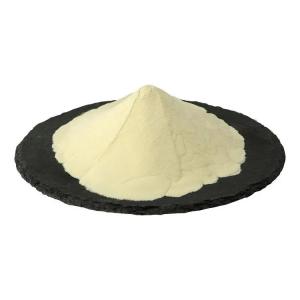Phosphatidyl serine is used in seasoning blends.
Time:2025-08-11Phosphatidylserine (PS) is a naturally occurring phospholipid component primarily found in cell membranes. It plays a structural role in both plant and animal cells and is commonly derived from sources such as soy lecithin or sunflower lecithin for commercial use. In recent years, phosphatidylserine has garnered attention not only in dietary supplements and functional foods but also in culinary and processed food applications. One emerging area of interest is its incorporation into seasoning blends.
Chemical Characteristics
Phosphatidylserine is an amphipathic molecule, meaning it contains both hydrophilic (water-attracting) and lipophilic (fat-attracting) properties. This makes it particularly useful in food formulations where emulsion stability and flavor distribution are important. Its molecular structure allows it to interact with both aqueous and lipid-based ingredients, making it a versatile component in dry spice mixtures and seasoning powders.
Role in Seasoning Blends
In seasoning blends, phosphatidylserine can serve several technical and formulation-supportive functions:
Flavor Carrier
Phosphatidylserine can help to bind and carry oil-soluble flavor compounds within a dry blend, enhancing the uniform distribution of taste elements across a dish or food surface.
Texture Modifier
Due to its phospholipid nature, phosphatidylserine can contribute to the mouthfeel or perceived richness of certain seasonings, especially in formulations designed for snacks, sauces, or instant soups.
Stabilizer and Emulsifier
In seasoning blends that are reconstituted in water or applied to oily surfaces (like chips or coated snacks), phosphatidylserine may assist in stabilizing emulsions or improving the dispersion of other ingredients.
Processing Aid
In powdered seasoning blends, phosphatidylserine may help reduce clumping or improve flowability during manufacturing and packaging processes.
Sources and Production
The phosphatidylserine used in food formulations is typically extracted and purified from plant sources, with soybeans and sunflowers being the most common. It is usually obtained through enzymatic modification or extraction of lecithin, followed by refinement processes to produce a stable and food-grade powder or liquid concentrate.
Applications in the Food Industry
Seasoning blends incorporating phosphatidylserine may be used in a wide range of products, including:
Instant noodle seasoning packets
Snack seasoning powders (e.g., for chips, popcorn, or crackers)
Dry rubs and marinades
Soup and sauce base mixes
Savory protein coatings or batters
Its compatibility with both dry and semi-moist formats allows for creative culinary applications, particularly in foods targeting sophisticated flavor profiles or premium texture characteristics.
Conclusion
While phosphatidylserine is more widely recognized in the context of nutritional supplementation, its functionality in food processing and formulation is steadily gaining recognition. In seasoning blends, its roles as a flavor carrier, emulsifier, and texture modifier make it a valuable tool for food developers aiming to enhance product consistency, performance, and sensory appeal. As the industry continues to innovate with hybrid and multifunctional ingredients, phosphatidylserine presents a promising avenue for both technical and culinary advancements in seasoning applications.


 CN
CN





